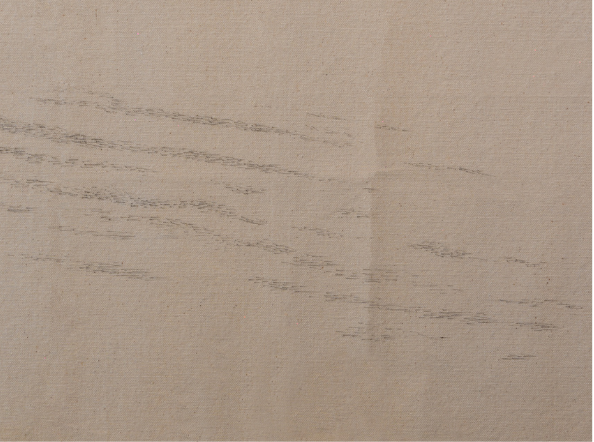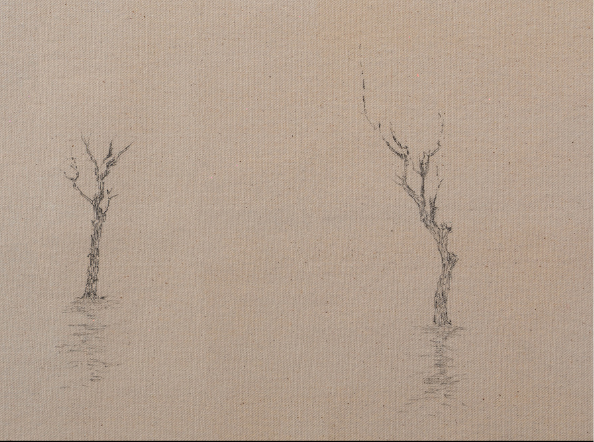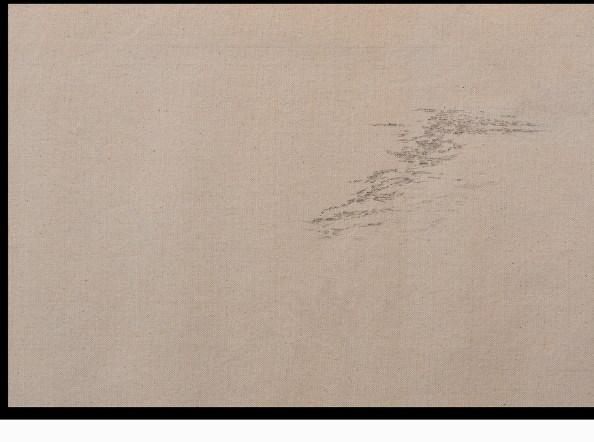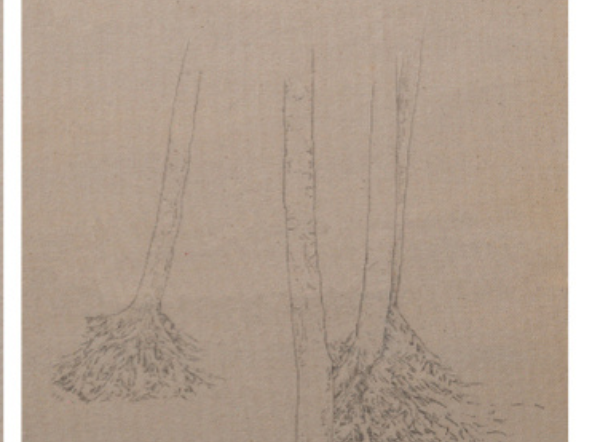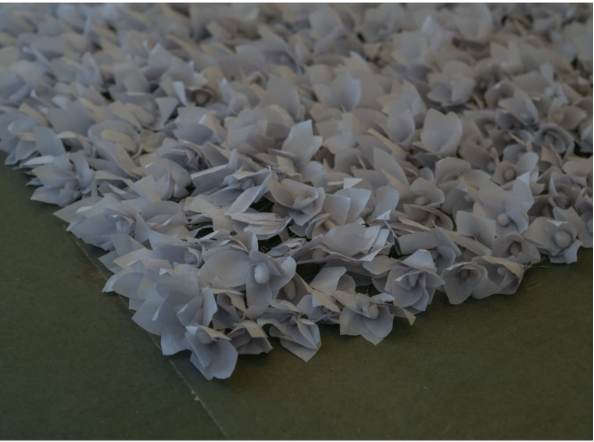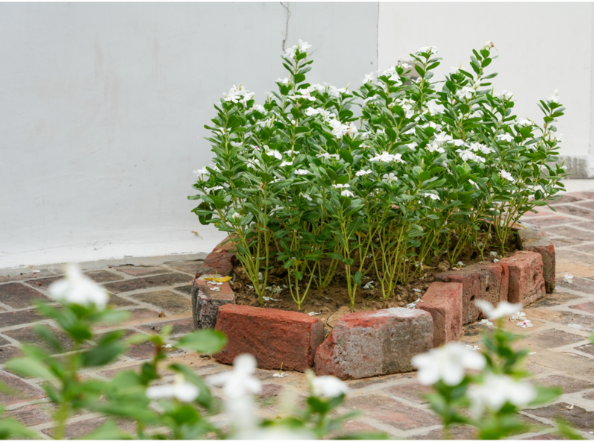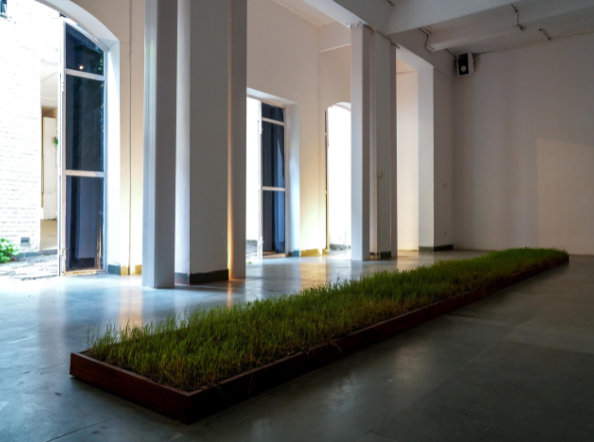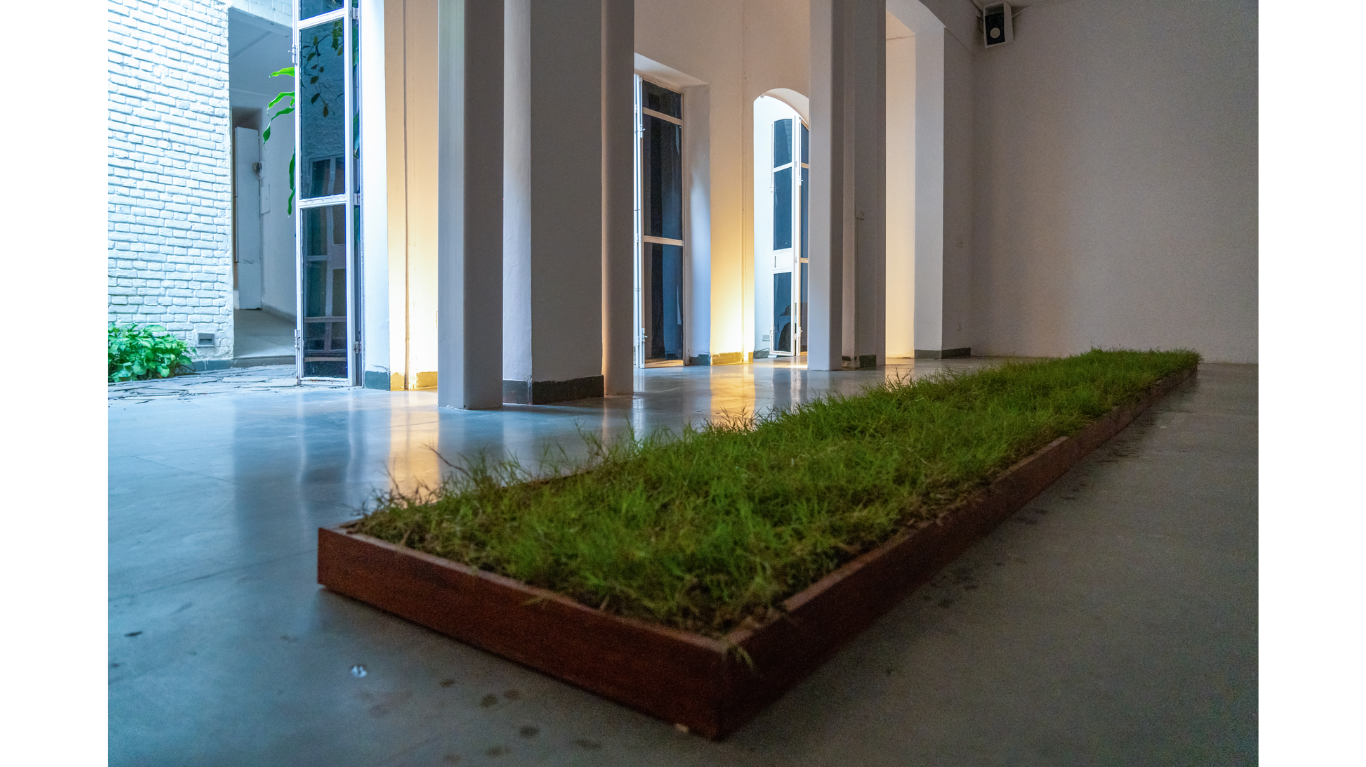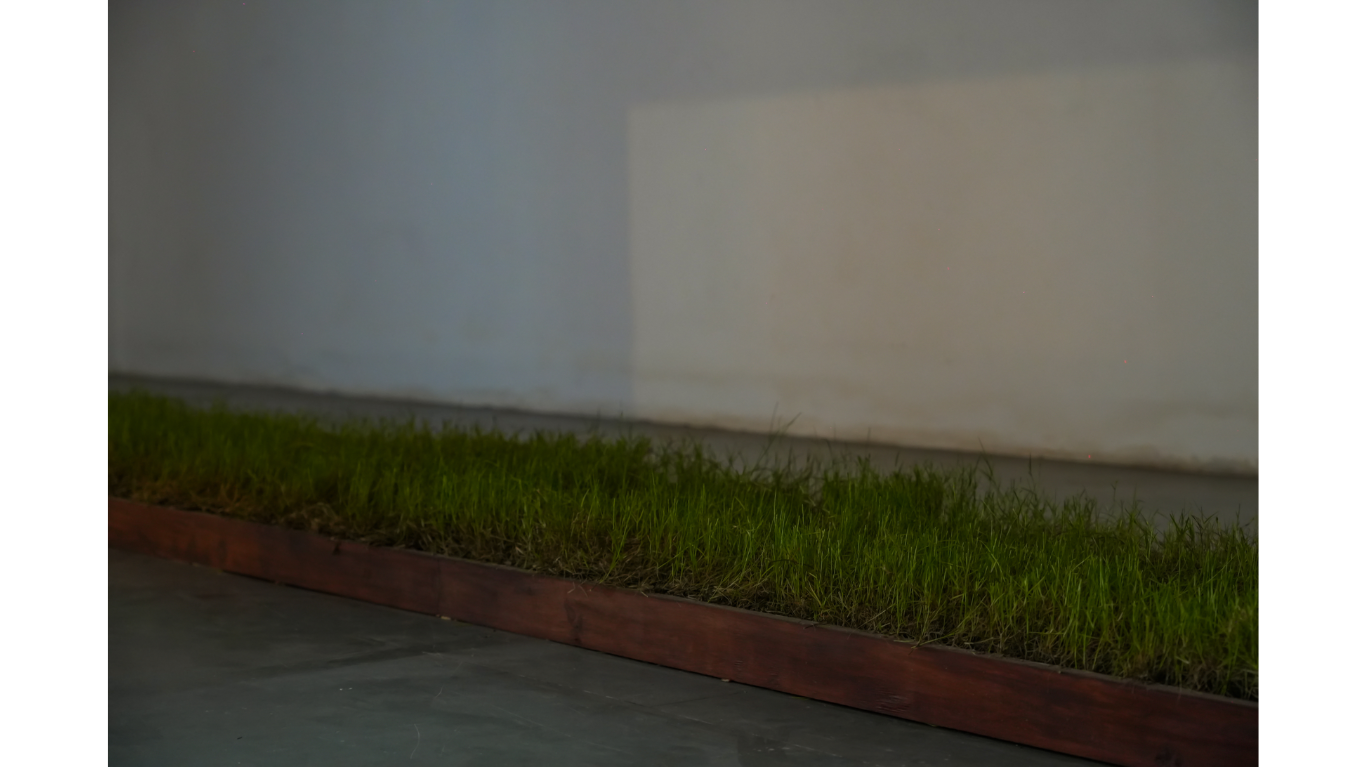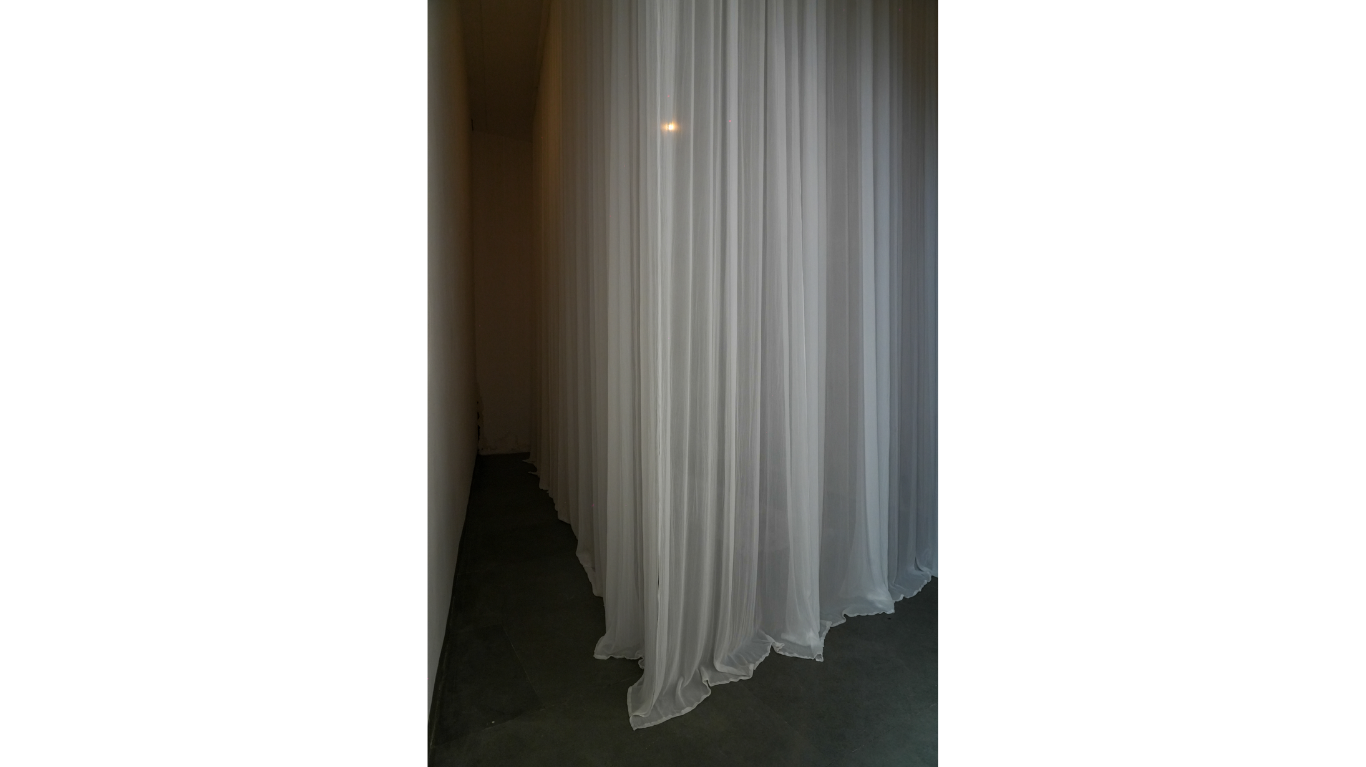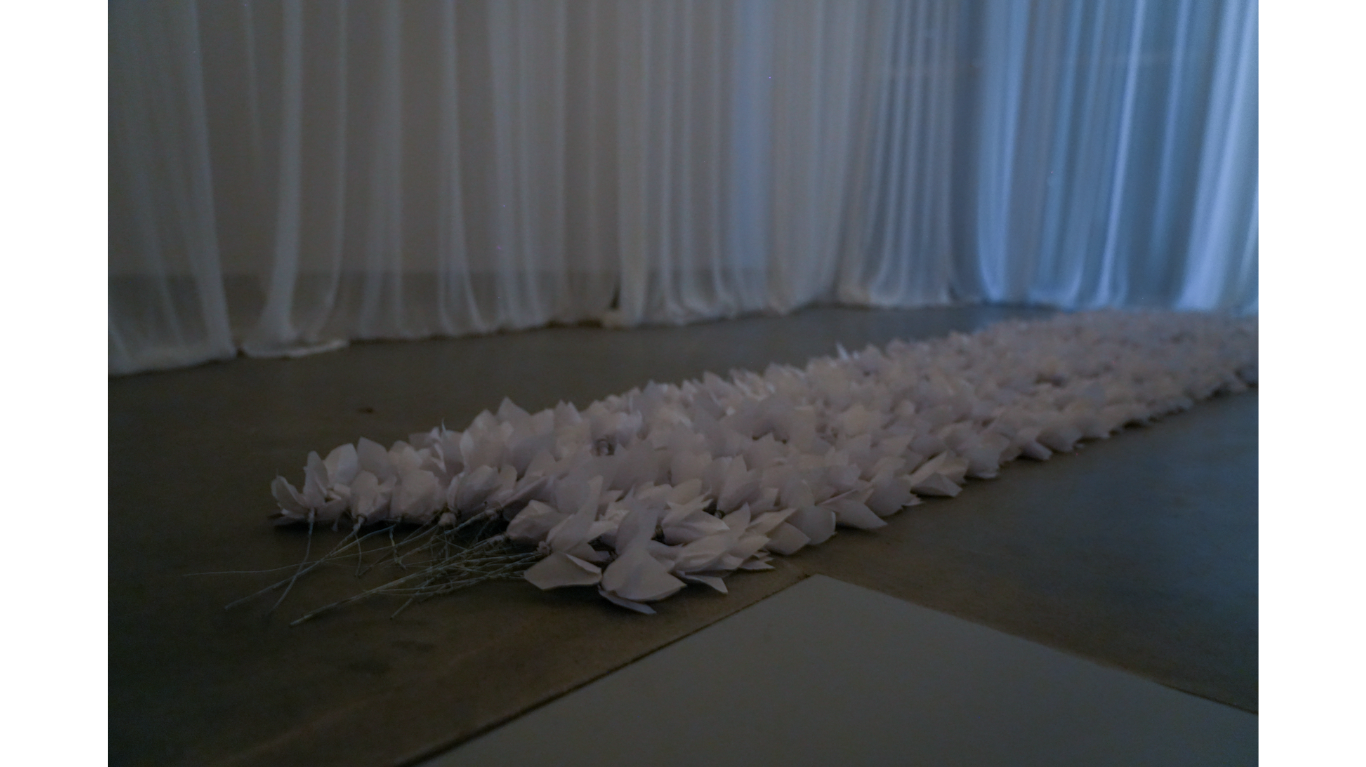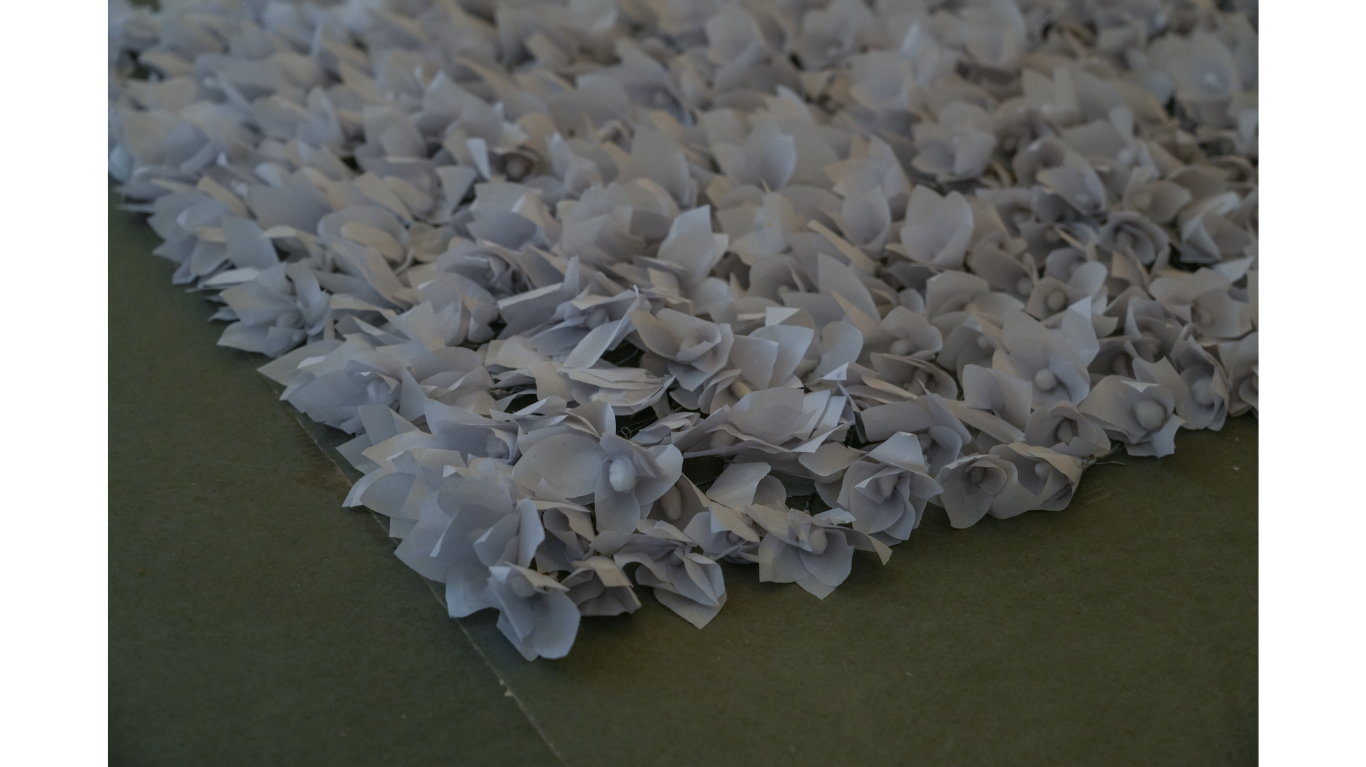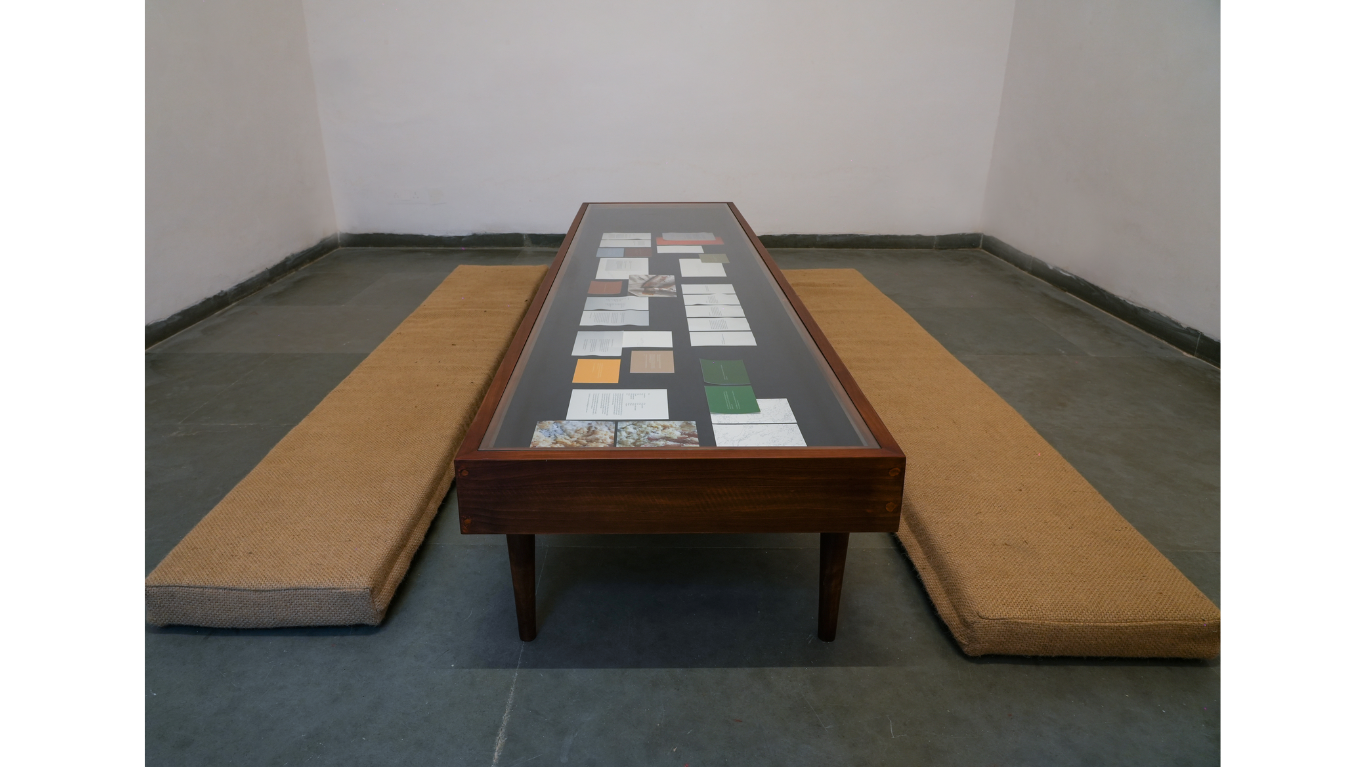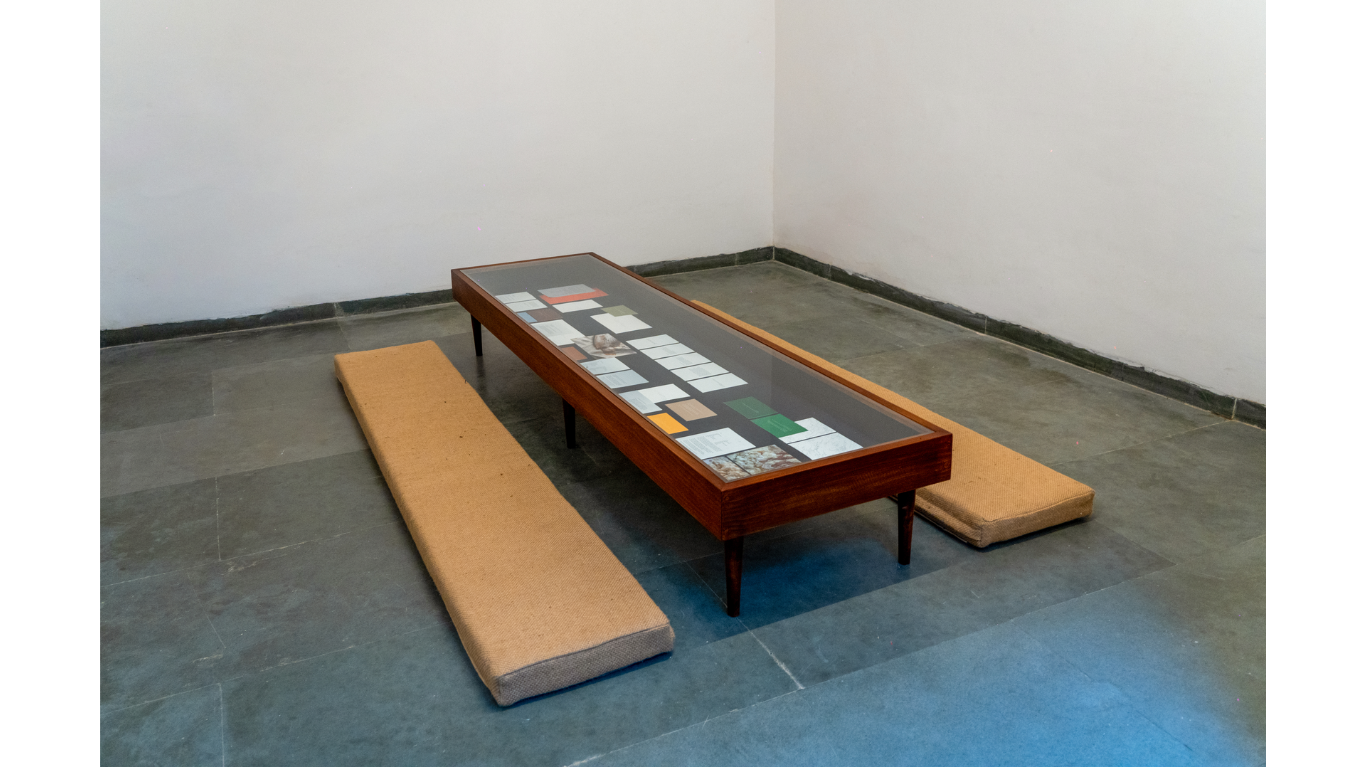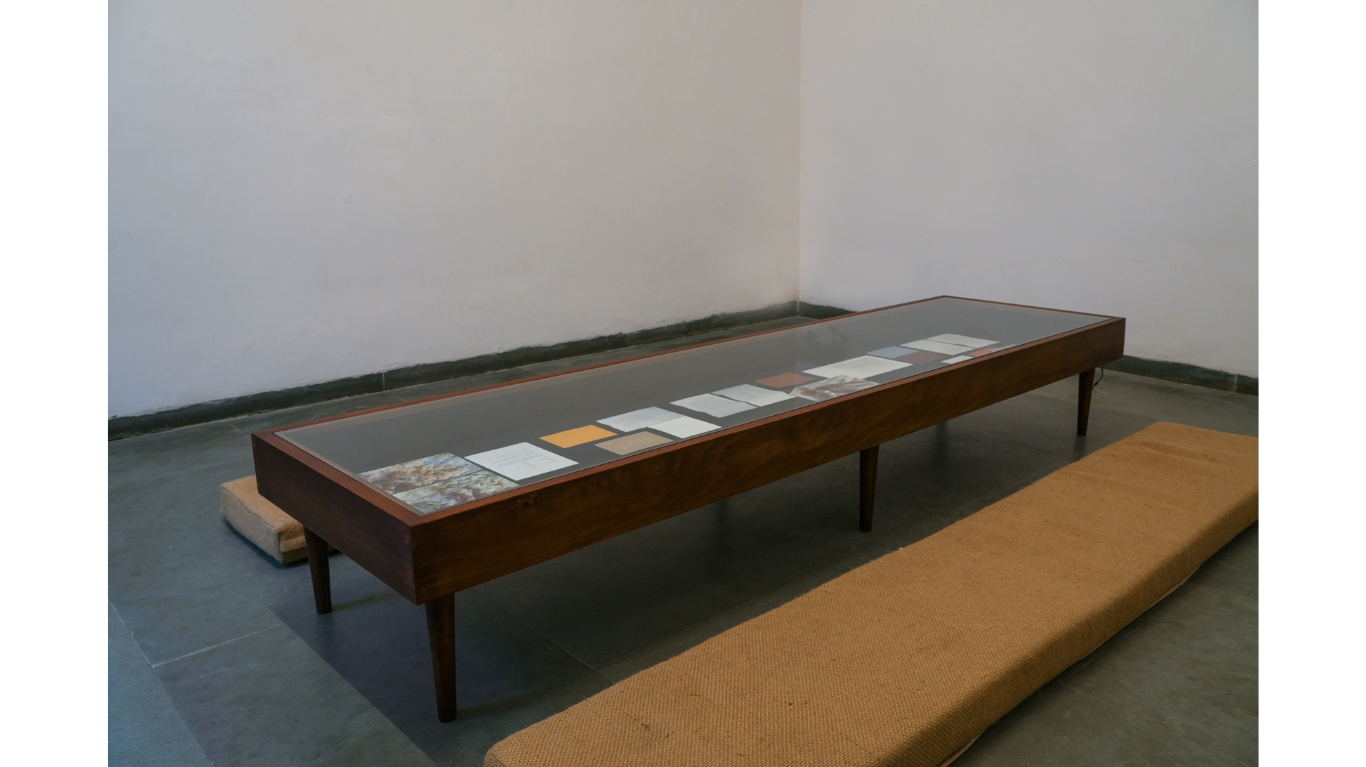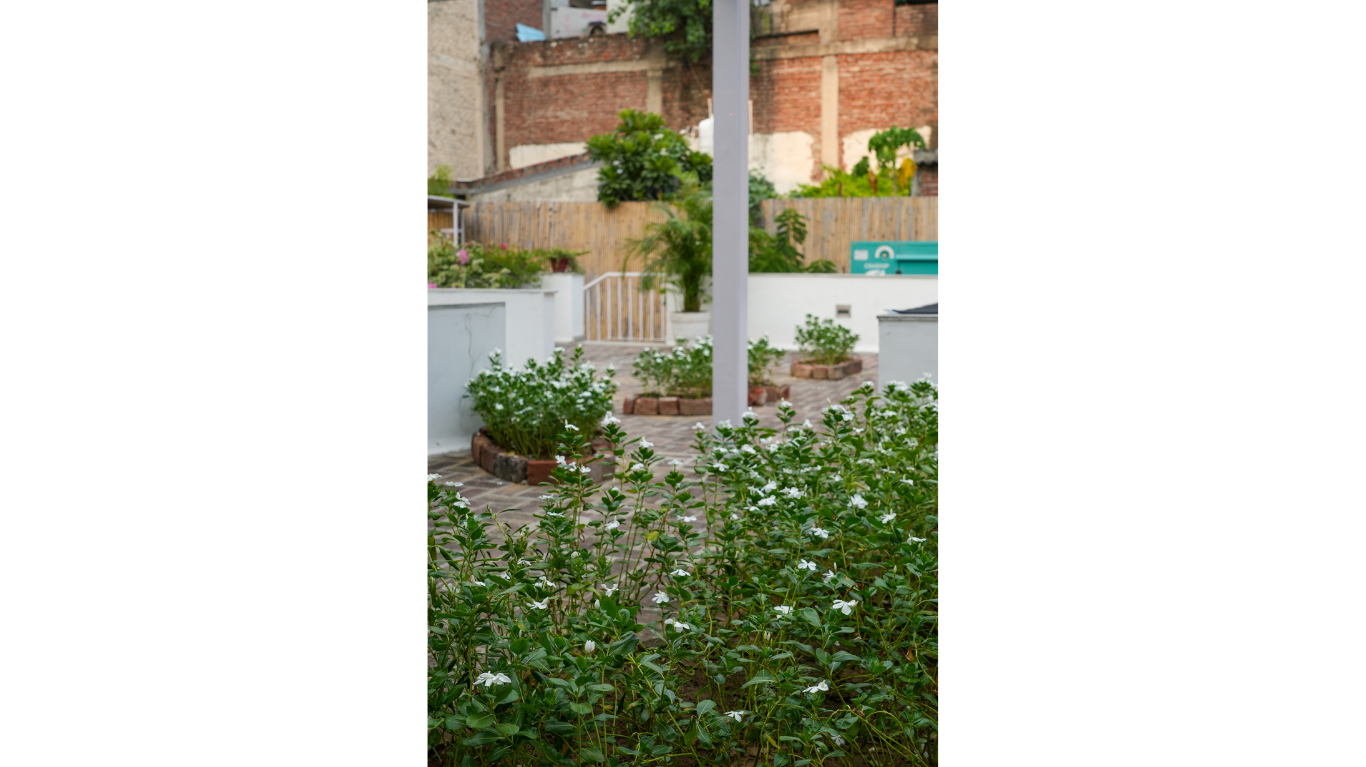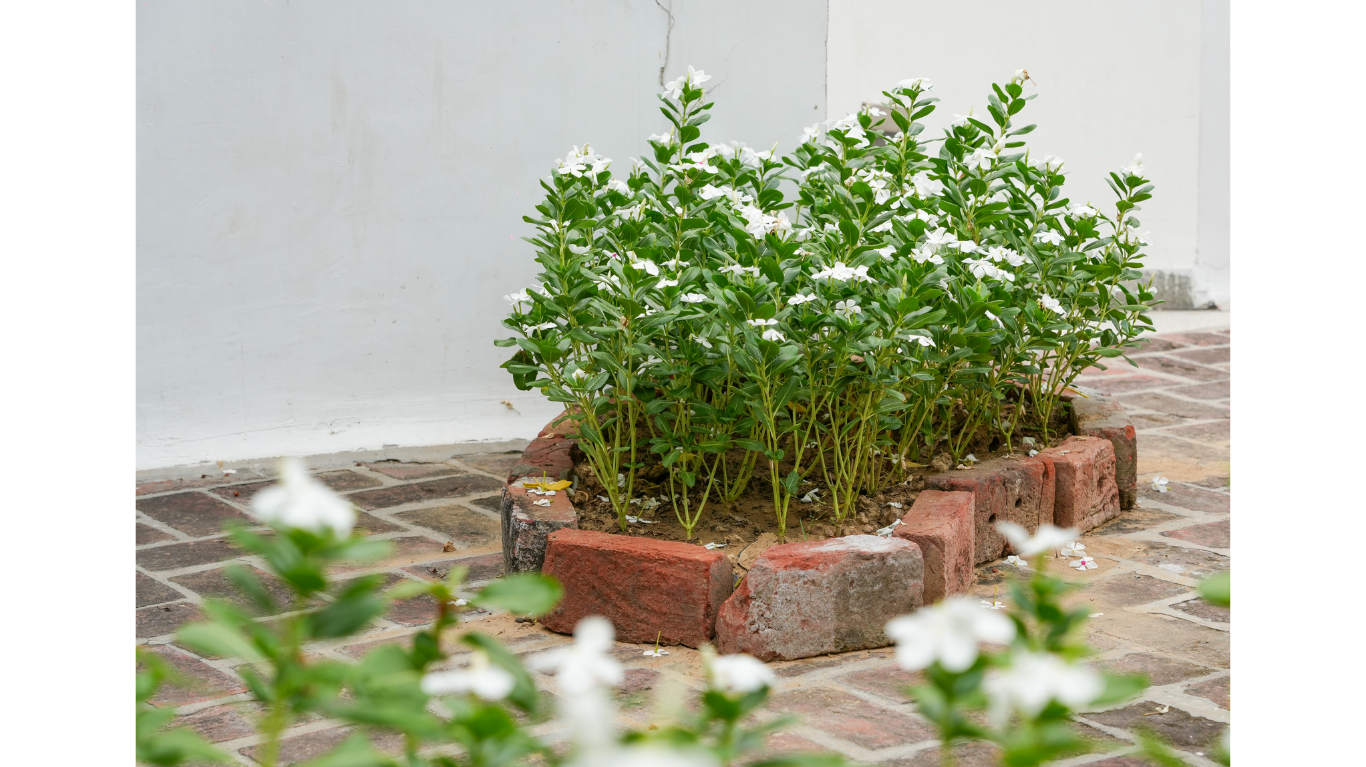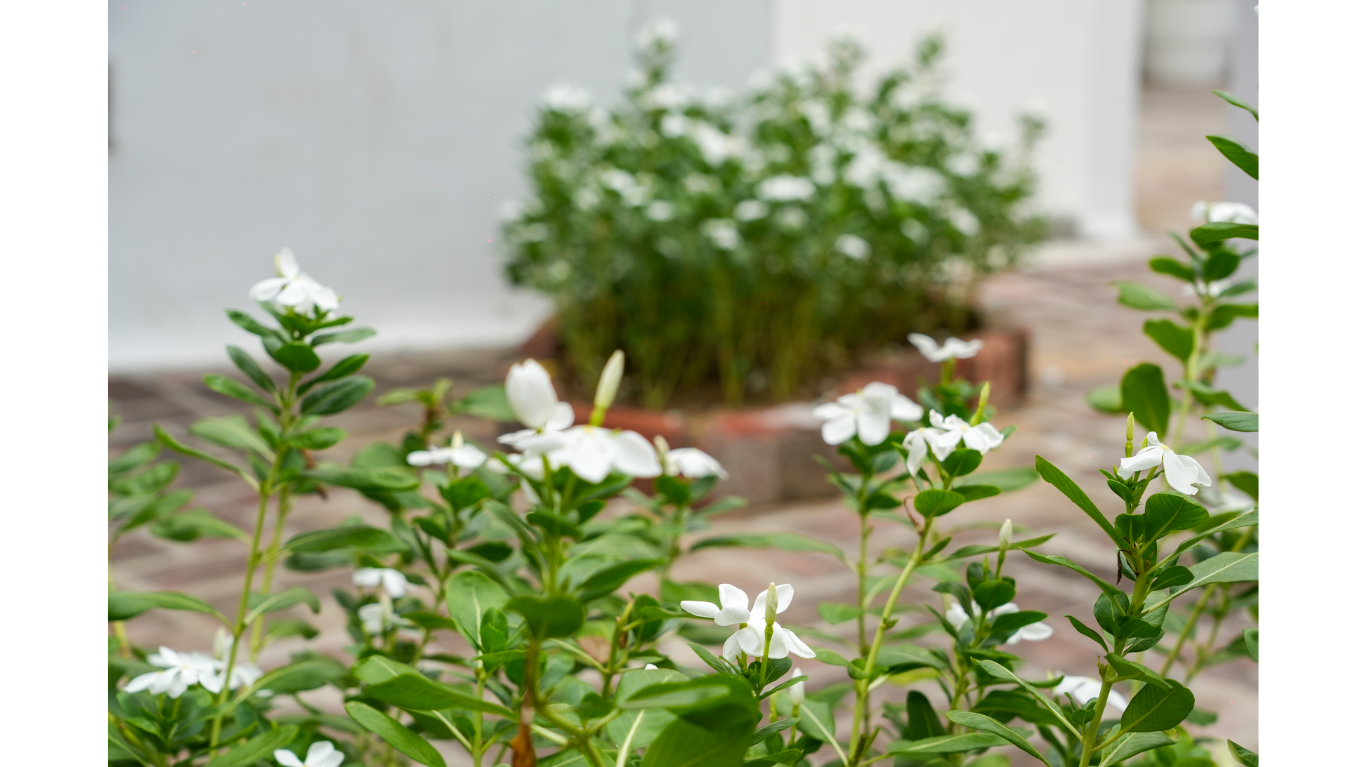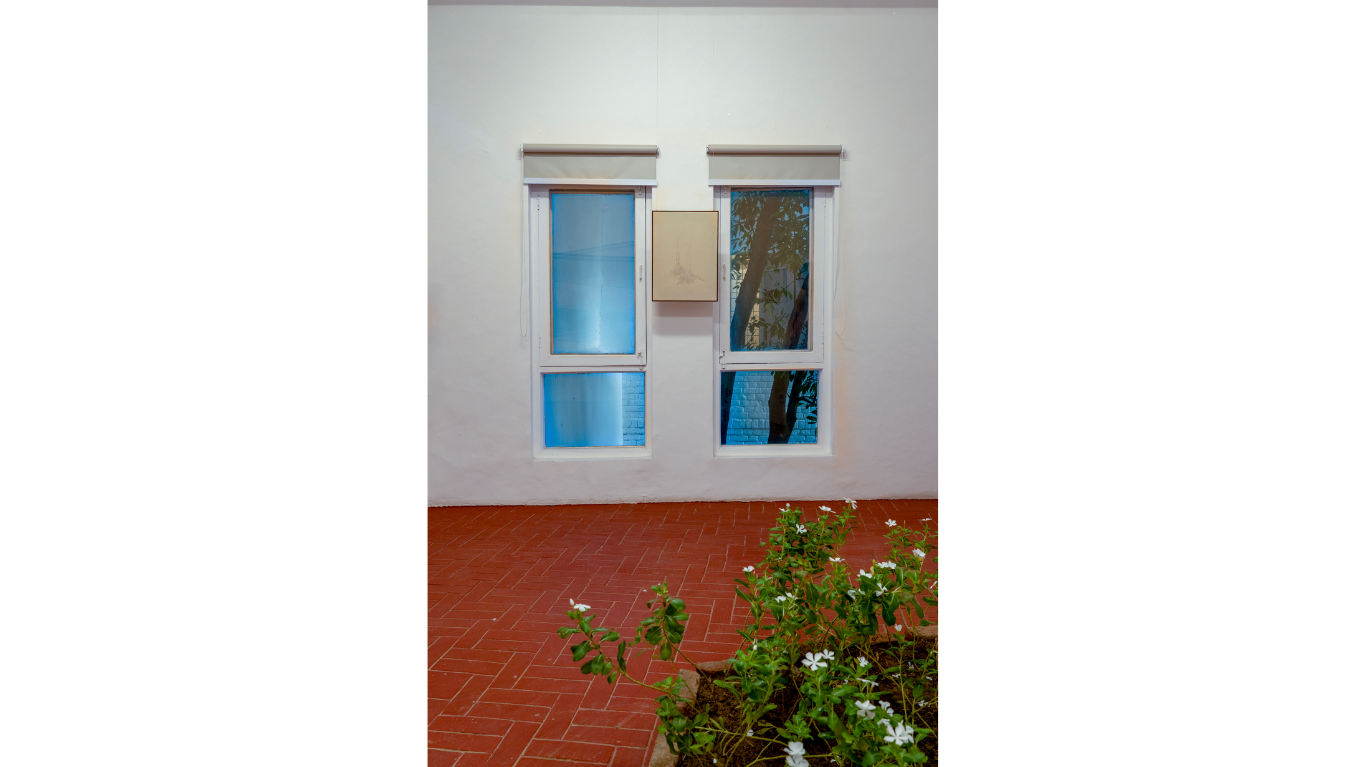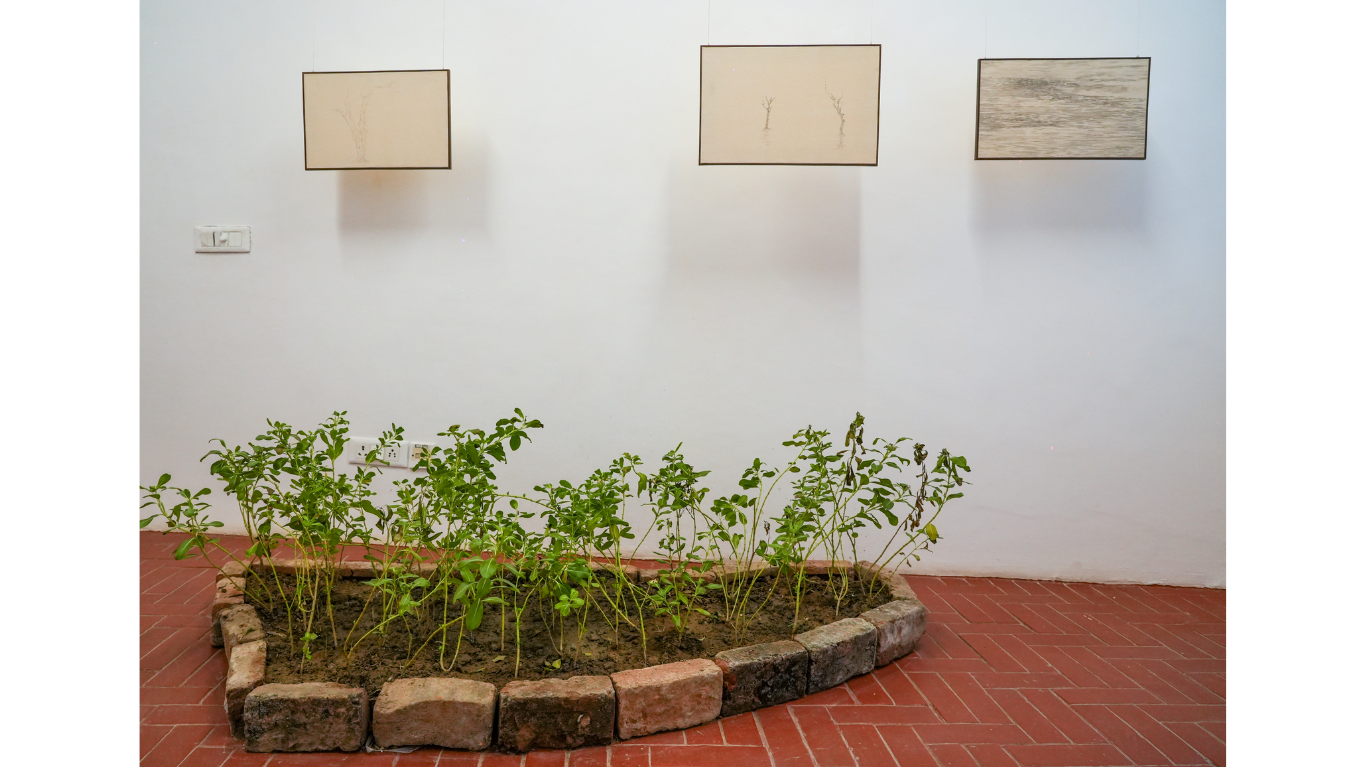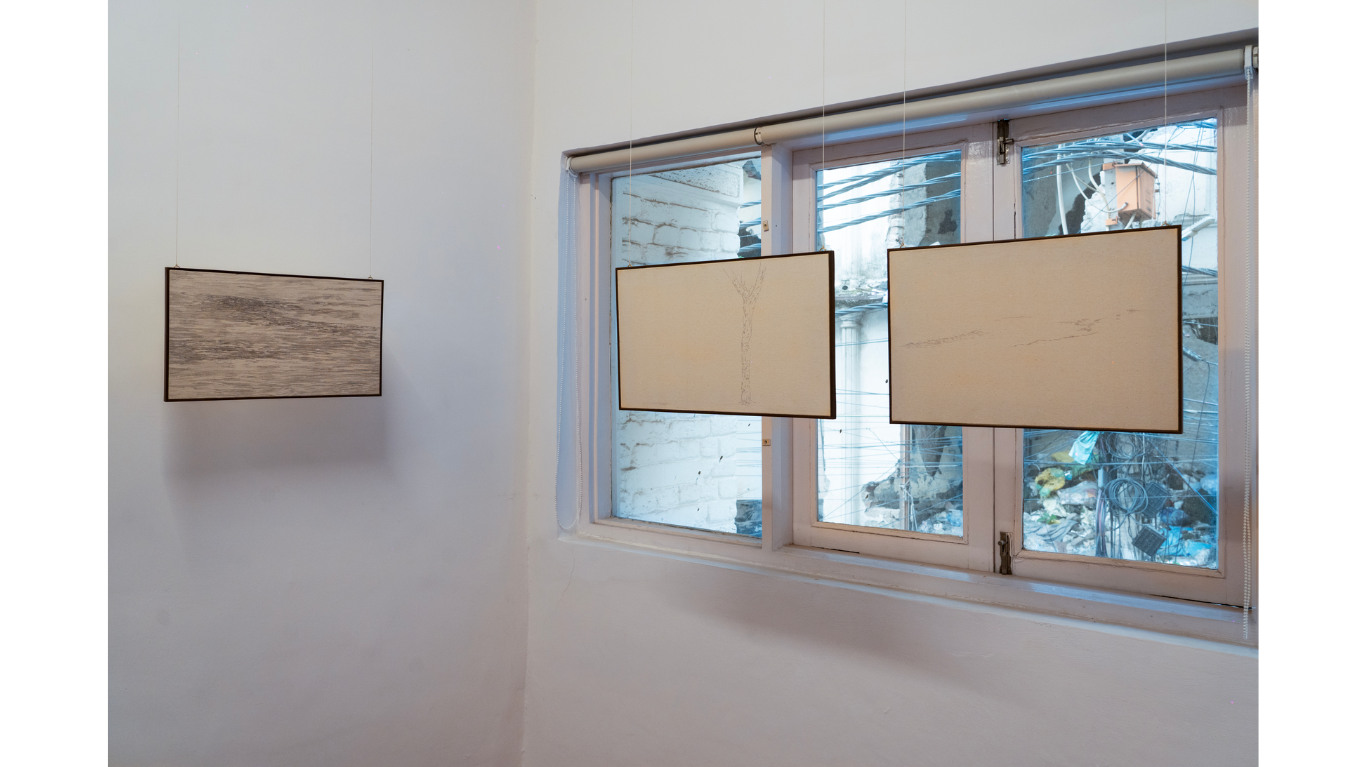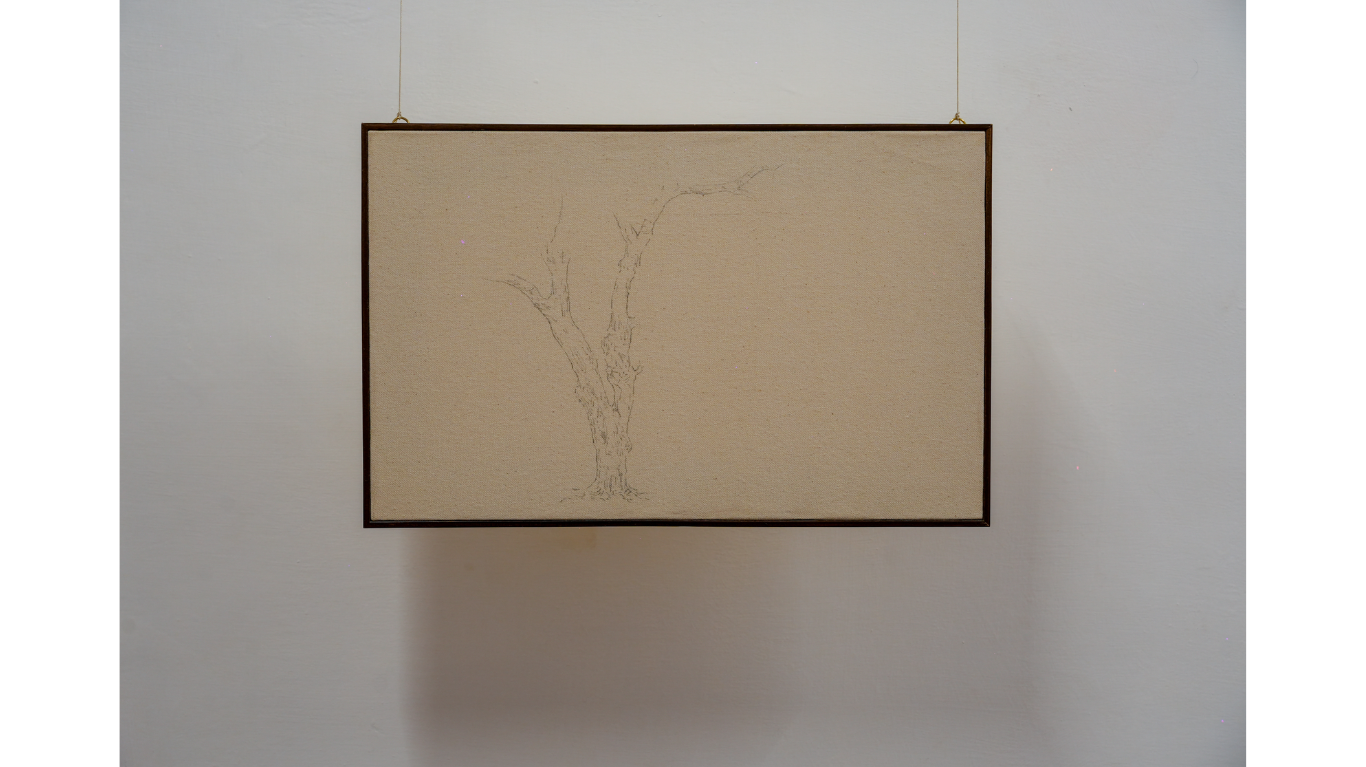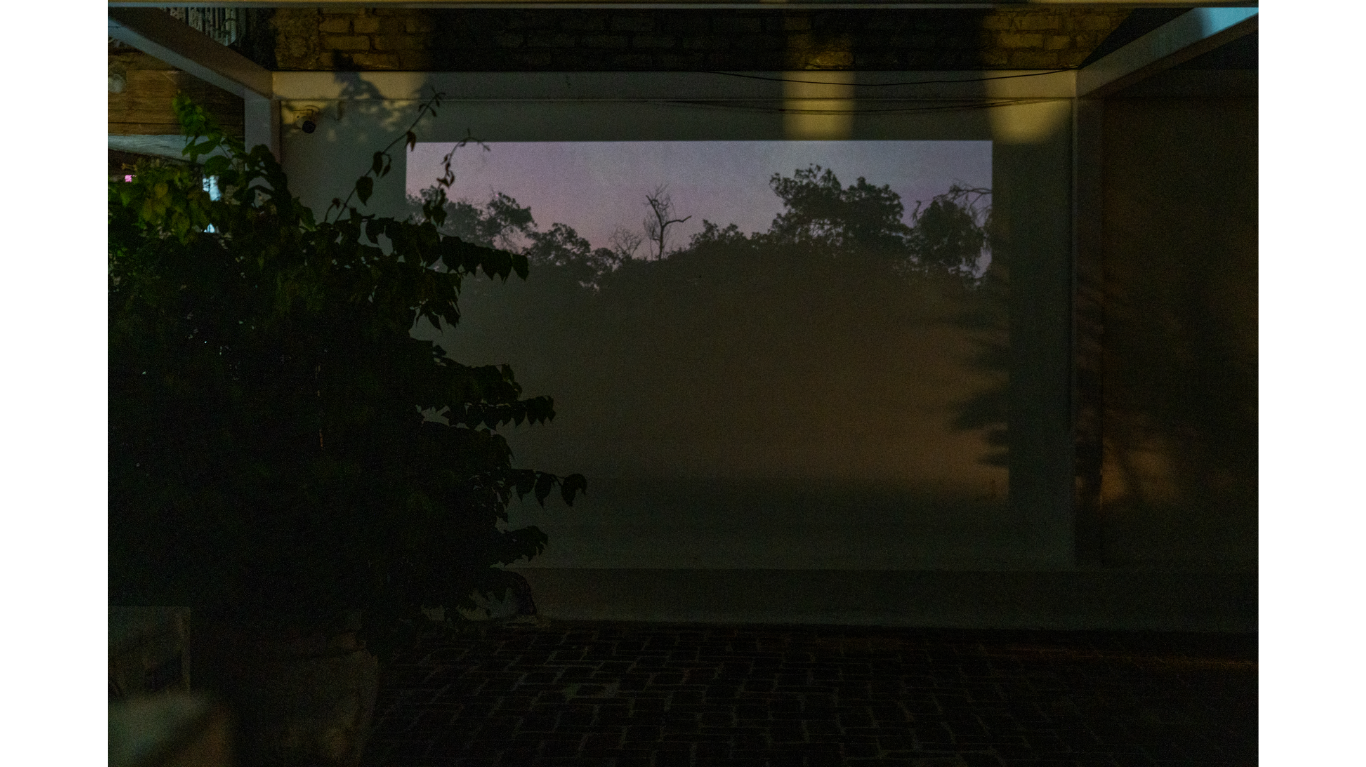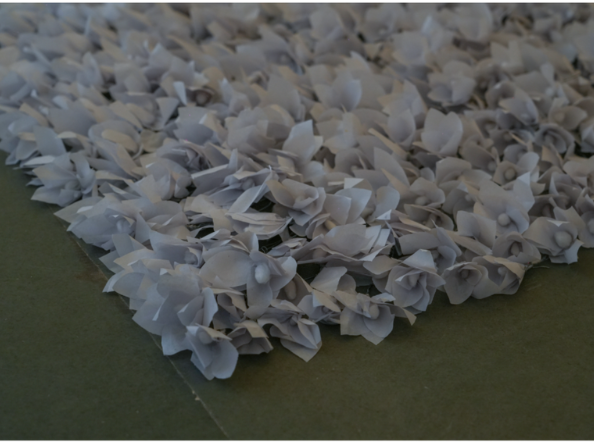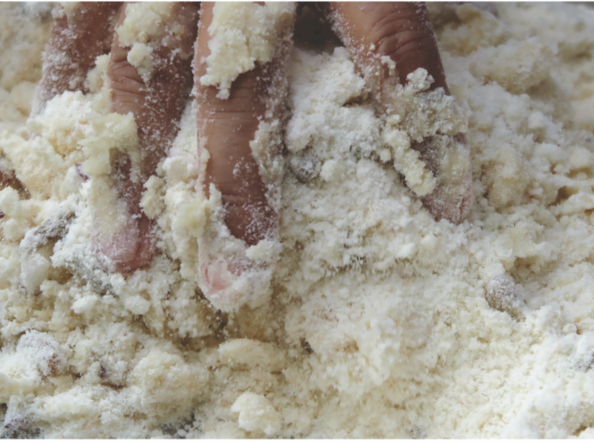-
Exhibitions
- Rites Adrift |
Omer Wasim | curated by Anushka Rajendran
- — Omer Wasim
-
Rites Adrift
Asr (Urdu)
— under the influence
— effect
— states of possession, demonic or angelic
Asr echoes from the soul of Rites Adrift, as spirits that wail from the wounds of militarised ambitions, as hauntings of many homes broken shortly after they were lovingly forged, and as psychological states induced by forced movement, necessary subterfuge, irreparable loss and modalities of survival in the various newly defined and redefined political territories of the sub-continent. Omer Wasim’s practice of gathering traces that silently speak despite repression, censorship and erasure, within this exhibition allows legibility—veiled, fragmented and meandering—to a telling of his familial history that spans this geo-political region, from some years prior to 1947 and until the years that ensued after 1971. This exhibition lends witnesses as a form of resistance to assertions of un-belonging, sensorial remembrances that are intergenerational and rituals of a displaced time and space that have been forcibly made illicit. Sonic residues of jinns, whispers of botanical life forms caught in the winds of history, the roar of oceans that may still commune with one another and the call of crickets from various geographies in South Asia convene as one to invite us into the exhibition.
The seemingly ceaseless rains of 2020 washed away several layers of silence that lingered upon a journey spread across three generations from coastline to coastline, from mountainous terrains to stagnant plains, between Patna, Howrah, Chittagong, Kathmandu, Islamabad and Karachi, just a few moons prior to his own travels across the island context of Sri Lanka in search of solidarities with healers, historians and friends. Since then, Omer’s practice has bifurcated into parallel endeavours of urging recollections from surviving family members to be recorded, and engendering spaces of narrative making with communities that are negotiating experiences of displacement. These two threads, one that is intimate and personal, and another that involves communal acts of sharing experiences of loss and regeneration, sustain each other in the various works on view at this exhibition and its related programs that unfold with neighbours in the Khirkee Village.
The possibilities presented by post-enlightenment approaches to history writing that rely on the primacy of facts, evidence and data implode as the empirical distortions of each of the partaking States in this history collide and contradict, yet collude at times to forget. In rethinking what constitutes evidence, Omer instead turns to remembrances wrapped around rituals that seek to melt into the air or swim amidst the creatures of the sea to return to a place that was once home. And also botanical life forms he has been in dialogue with his entire life such as the Dhaka ghass—that grows relentlessly across Karachi refusing to forget the origins of its rhizomatic roots in a different terrain, even as humans do. Sadabahar grows over graves in several cultures globally and allowed itself to be found as an articulation for the artist in Sri Lanka to pay respect to the dead whose graves elude visits, and remain abandoned from those rites that are due to our ancestors. Motiya from his mother’s garden and recipes from her kitchen allude to offerings in both mourning and celebration, as entwined gestures of continuity. The necessary simultaneity of the two acts—for the living and the dead are just a breath apart from each other—acknowledge that any celebration of life is also an offering to those that have departed, and yet preserve our psyches from the imminence of death.
Many of these inherited rites and rituals upon whose wings Omer attempts a retelling of the past have shapeshifted across time and geographies as his family escaped from one ecology that sustained them to another. The coalescence of folk and pagan practices with an Abrahamic religion exceeds the limits prescribed by orthodoxy, such as the worship of saints for whom Omer and his collaborators in Delhi have laid out a fragrant floral carpet, assembled with care from paper as delicate as the persistence of such practices. The essential syncretic plurality of Islam and planetary circulation that is firmly held by this exhibition also nurtures another path for a region whose history is punctuated with the ellipses of violence, as a consequence of its inability to reconcile fixed notions of ethnicity and religion. The desire to belong should be enough for land that shifts and breaks apart, only responding to the call of its innate rhythms, for it can never really be owned as much as we may attempt to chop it up on paper and invent borders that do not heed the continuing landscapes. It is this wisdom of the earth that dares Omer to dream of the shores of Chittagong that were described to him with partial vividity despite the certainty that he will never be able to see them in his lifetime, and trees whose roots are as old as ancestors and relations whose remains lie in distant lands.
(Curatorial statement by Anushka Rajendran)
